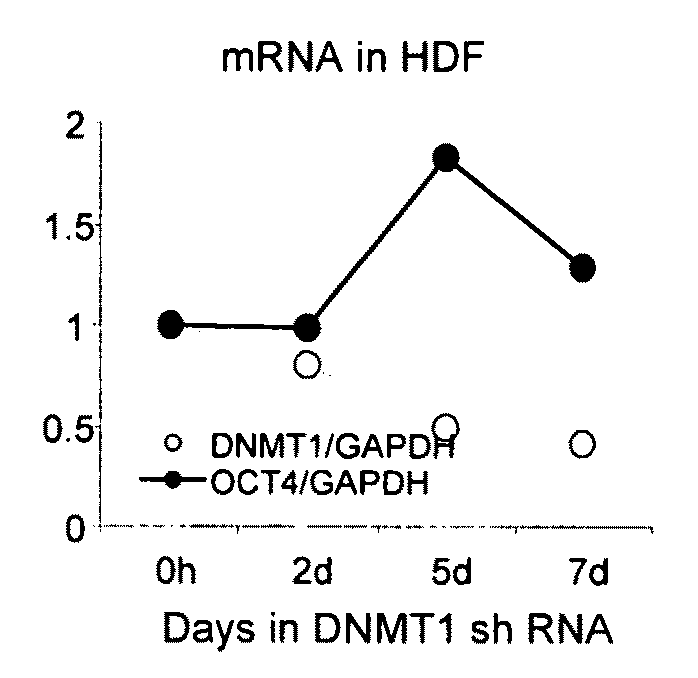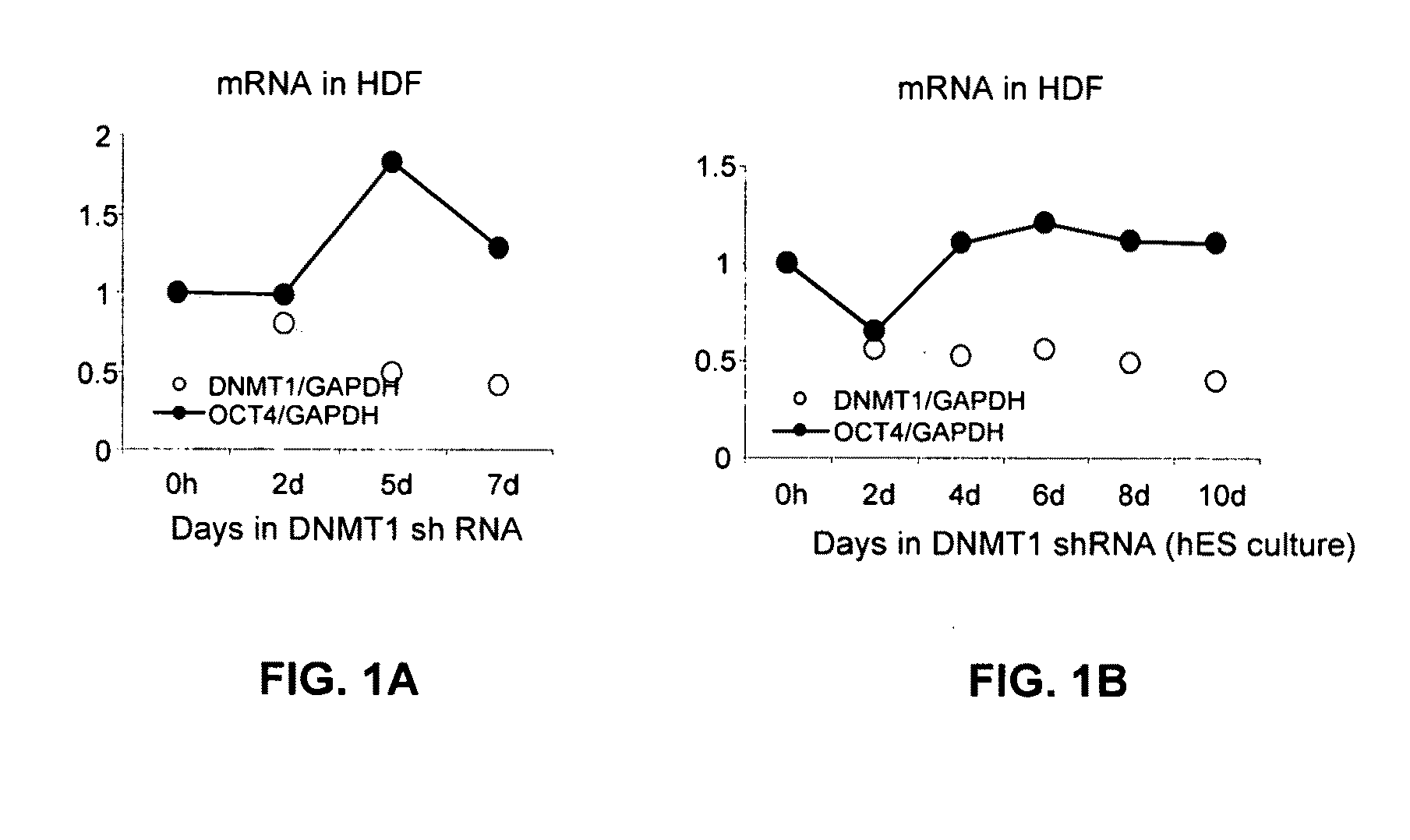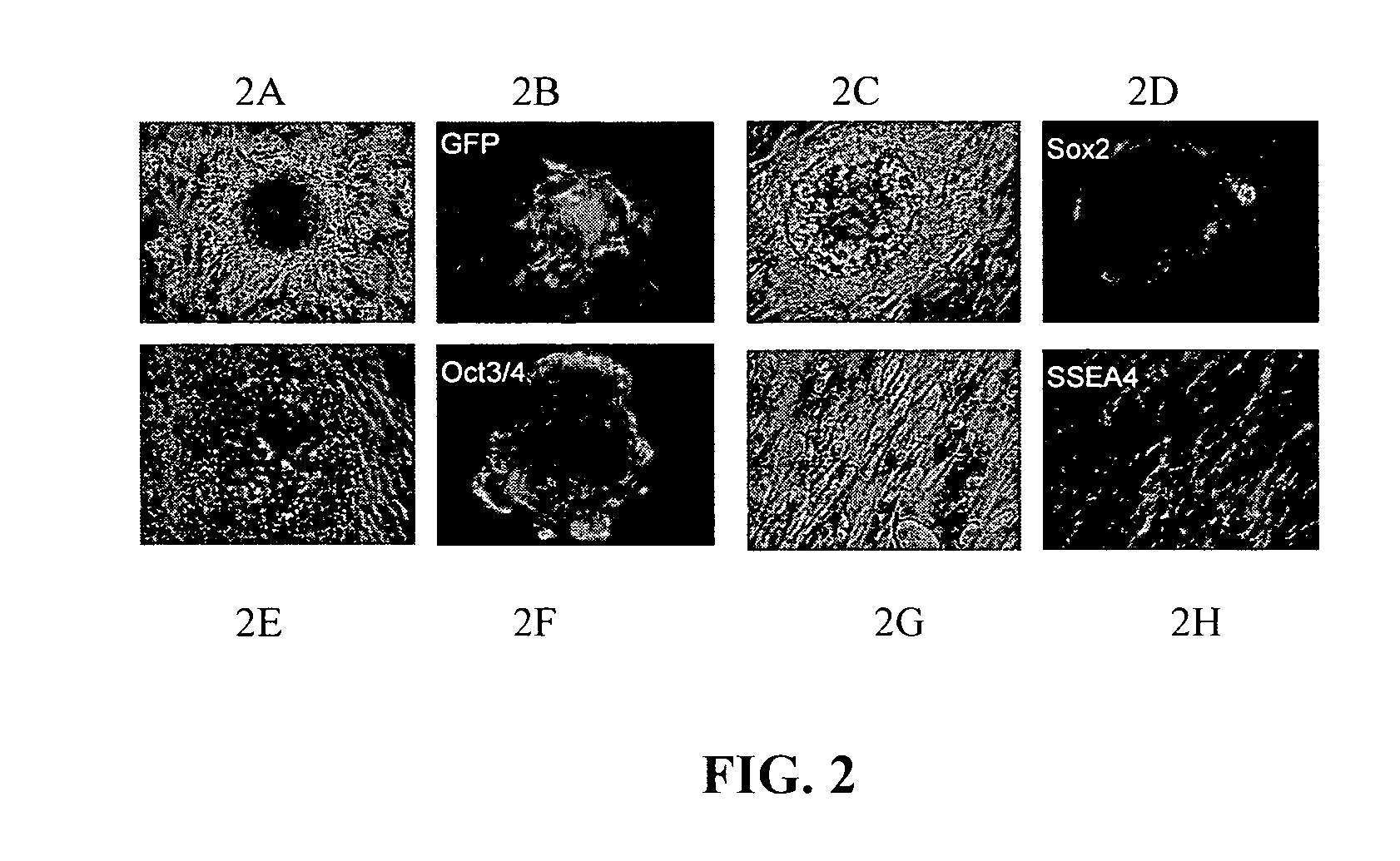Reprogramming a cell by inducing a pluripotent gene through RNA interference
- Summary
- Abstract
- Description
- Claims
- Application Information
AI Technical Summary
Benefits of technology
Problems solved by technology
Method used
Image
Examples
example 1
[0139]SMARTvector shRNA-GFP-lentivirus for silencing epigenetic regulatory components that contribute to DNA methylation, histone deacetylation, and histone methylation (see Table I) will be introduced into human primary and BJ fibroblast cultures. However, it should be understood that any regulatory component can be targeted using the methods of the invention. Single and synergistic effects of major epigenetic regulatory components will be tested by introducing shRNAs alone and in combinations including but not limited to 2, 3, 4, and 5. Following puromycin-based selection, cells constitutively expressing target shRNA will be harvested to confirm target gene silencing with quantitative real time RT-PCR
[0140]Methods
[0141]Cell culture. Human primary fibroblasts (passage 1) and human BJ fibroblasts will be purchased from Cell Applications, Inc. (San Diego, Calif.) and American Type Culture Collection (Manassas, Va.), respectively, and will be maintained at 37° C. in 95% humidity and 5...
example 2
[0145]Pluripotency genes are transcriptionally-silenced in somatic cells by repressive epigenetic regulatory components including but not limited to proteins that contribute to DNA methylation, histone deacetylation, and histone methylation. Inhibition of these components by shRNA to induce DNA demethylation, histone acetylation, and histone demethylation may alter chromatin structure and enable transcription of pluripotency genes.
[0146]Epigenetic repressive complex targets, such as those identified in Example 1, will be analyzed for chromatin modifications. In addition, human somatic cells that constitutively express target shRNA and exhibit significant target gene expression knockdown or silencing will be analyzed for up-regulation of pluripotency genes.
[0147]Global and pluripotency transcript-specific DNA demethylation, histone acetylation, and / or histone demethylation will be confirmed in comparison to untreated control cells using methods outlined below. In addition, up regulat...
example 3
[0156]Repressive epigenetic targets will be analyzed by assessing the ability to form colony units under human ES cell culture conditions and differentiation capacity, in vitro and in vivo, in puromycin-selected human somatic cells constitutively expressing target shRNA, which exhibit up regulation of pluripotency genes (ie., Oct4, Nanog, Sox2, and / or other stemness-related genes). To accomplish this, cells will be cultured under human (ES) cell culture conditions and embryonic stem cell-like colony formation will be quantified. Colonies then will be harvested for in vitro directed differentiation into multiple lineages using cocktails outlined below. In addition, colony cells will be injected into immune-deficient Nude mice to assess capacity for teratoma formation, in vivo. Phenotypes assessed as described will be compared to untreated control cells and federally-approved human embryonic stem cells.
[0157]Human ES cell culture for colony unit formation. Puromycin-selected somatic c...
PUM
| Property | Measurement | Unit |
|---|---|---|
| Fraction | aaaaa | aaaaa |
| Fraction | aaaaa | aaaaa |
| Structure | aaaaa | aaaaa |
Abstract
Description
Claims
Application Information
 Login to View More
Login to View More - R&D
- Intellectual Property
- Life Sciences
- Materials
- Tech Scout
- Unparalleled Data Quality
- Higher Quality Content
- 60% Fewer Hallucinations
Browse by: Latest US Patents, China's latest patents, Technical Efficacy Thesaurus, Application Domain, Technology Topic, Popular Technical Reports.
© 2025 PatSnap. All rights reserved.Legal|Privacy policy|Modern Slavery Act Transparency Statement|Sitemap|About US| Contact US: help@patsnap.com



